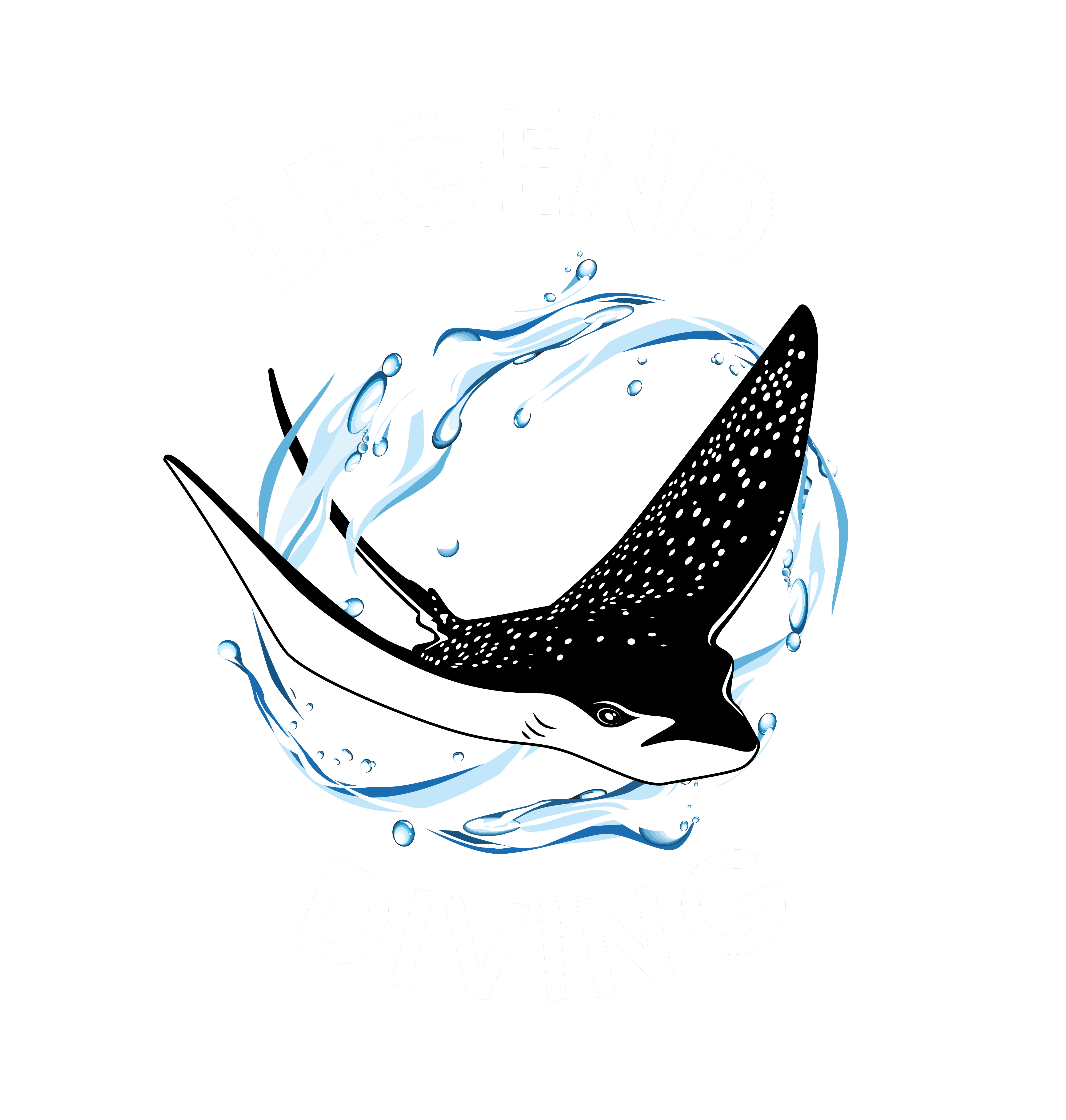
Those Fascinating and Enigmatic Creatures
What Do We Know About Manta Ray Penida
People arriving on Nusa Penida for a diving vacation usually have a visit to the Mantas on their bucket list. In fact, tourists come from all corners of the world to personally meet with a Manta ray in Bali. Notably, our most requested dive sites are Manta Point and Manta Bay,
as this is where they are found. It is important to realize that the Manta ray are visible to both scuba divers and snorkelers, alike. Continue reading as we discover why these creatures are so popular and how you can arrange a meeting with them. Our Manta ray Bali trip will certainly keep you smiling for days.
Manta ray are a type of large cartilaginous fish. They consist of two species, the Reef Manta ray, and Oceanic Manta ray. Reef Mantas are slightly smaller and grow up to 5.5 meters wide. On the other hand, Oceanic Manta ray can grow up to 8.8 meters wide. The Reef Manta ray is what you will usually see in our waters. However, it is still possible to spot Oceanic Manta ray.
Manta Ray are truly easy to identify whilst underwater. Accordingly, they have 2 pectoral fins that are similar in shape to the wings of a bird. In fact, it is common for many people to call them the birds of the sea or flying carpets. Another way in which Mantas are identifiable is by their cephalic lobes, which protrude forward from their mouths. Because their mouth is large and rectangular, it allows for large quantities of food to enter. On that note, Manta Ray have a diet consisting mainly of Zooplankton that is filtered through their gill rakers. Surprisingly, Mantas don’t actually use their teeth to eat. Moreover, they have a flat, blanket-like body with a long tail that does not have a stinger. Both Reef and Oceanic Manta Rays have a very similar morphology.
When it comes to color, then you will most likely see a dark upper and white lower body. On that note, Mantas have specific fingerprint-like patches on their lower body that are unique to each of them. In fact, this is how we can identify who is who in the Manta world. Occasionally, we may see an all-black Manta, also known as the Ninja. Together with MantaWatch, we use their unique patches to identify and record data on them. You can help with this, too, all you need is a camera and an internet connection to submit the pictures.
Indonesia has 2 prominent seasons, the rainy or wet season and the dry season. Unfortunately, during the wet season months, we experience vast amounts of rain that ultimately leave the streets flooded. As a result, large amounts of the trash that is on land, ends up in the ocean. The overspill of trash in the ocean is extremely harmful to our Manta population. In fact, studies show that Mantas ingest 90m3 of water per hour and therefore consume large amounts of unwanted plastic. Notably, the Marine Megafauna Foundation has conducted studies indicating that Mantas can ingest up to 63 pieces of plastic per hour. Other forms of pollution including fishing lines and floating debris can get caught onto the Mantas and therefore cause harm. With this in mind, trash management is a serious issue that needs to be addressed, fast.
Indeed, a massive threat to our global oceans and the local Manta Population is overfishing. Manta Ray are generally not the direct target of fishing boats, however, they are often caught as bycatch. This is truly unfortunate, as innocent creatures are losing their lives for no reason at all. With this in mind, fisheries around the world do, in fact, target Manta Ray use them for Chinese traditional medicine. As a result, the overall population is declining and therefore awareness needs to be raised and tighter conservation laws enforced. We must remember that Mantas bring thousands of dollars into countries through tourism and are therefore better alive than dead.
Due to the growing desire for an intimate encounter with a Manta ray, tourism has ultimately increased. On that note, more tourists equate to more boats and more boats will leave the Mantas feeling stressed. This certainly does have an effect on the Manta population at our dive sites. Accordingly, the MMF has done a study and has thus determined that seasonal closures of dive sites will help. Additionally, if all watersport services follow the Green Fins protocols, then this will in turn help slow the problem down.

Conservation and Awareness
Help Protecting Those Harmless Gentle Beings
The Nusa Penida Marine Protected Area is home to many juvenile Manta Ray, which indicates that breeding grounds are close. This is truly a good sign as we can take rest in knowing that the waters are, in fact, protected. Female Manta Ray will reach their state of reproduction by age 8 – 10.
However, Males will reach them at as young as 6 years old. With this in mind, the fertility rate is rather low, with only 1 or 2 offspring being reproduced. It is therefore especially important to keep this species protected and away from harm.
Notably, the dive sites where we will visit the Manta ray are:
Manta Bay & Manta Point
Manta Bay is home to most of the juvenile male population who are there for feeding. In fact, research has clarified that the same Manta rays keep returning, time and time again. For this reason, protection is important because it’s part of a nursery habitat and therefore vital for the overall population.
Manta Point is home to mature Manta ray, generally. The Mantas keep returning to Manta Point to be cleaned at the various cleaning stations scattered around the dive site. It is important to point out that this is vital for their health as it removes parasites from their skin.

Code of Conduct
How to Dive with Manta Rays in Bali
Legend Diving Penida, along with the MMF, has created a well-thought-out list of how to safely dive with Manta Rays. You can download it HERE. Of course, we want everyone to enjoy their encounters, however; we need to ensure the safety of the wildlife, too. On that note, the priority is to keep our distance while they are at the cleaning stations.
With this in mind, it is vital for the Mantas to have regular cleaning of parasites by the cleaner fish. Once they have enjoyed a nice bath, they will usually stick around and put on a show for us.
Manta Conduct Guidelines
- Please Don’t touch anything whilst scuba diving, especially the underwater marine life. In the event that a Manta approaches, stay calm and do not touch!
- Please be slow and relaxed when approaching Manta Ray. Keep within their line of vision and never splash the water or enclose them.
- Please do not approach the cleaning station while the Manta Ray are being cleaned. Once the cleaning station is damaged, then the cleaner fish may disappear and therefore the Mantas, too.
- Please keep a distance of at least 3 meters between you and the Manta Ray.
- If the Manta Ray are not cleaning or are approaching the reef, then please stay at least 10 meters away.
- Please stay behind your dive guide and do not go any closer than they do.
- Please do not approach the Manta Ray from behind. This interpreted as predator behavior and they will be frightened.
- Do not go directly below or above the Manta ray. This will disturb them. However, if they swim above you please try not to blow many bubbles.
- Please do not block their escape path, and if they leave, do not chase them.
- Please do not use any loud underwater gadgets near the Manta Ray. For example, dive propulsion vehicles.
- Always listen to your dive guide and follow their instructions!
- Make sure to monitor your buoyancy and take care of the coral reef.
Swimming with Manta Ray
Because we aren’t all able to go scuba diving, we also offer snorkeling trips to the Manta Ray. With this in mind, the same guidelines will apply and you can read more about how to interact with them, here. Our snorkeling Manta Ray Bali excursions are just as fun and exciting.

Those Fascinating and Enigmatic Creatures
What Do We Know About Manta Ray Penida
People arriving on Nusa Penida for a diving vacation usually have a visit to the Mantas on their bucket list. In fact, tourists come from all corners of the world to personally meet with a Manta ray in Bali. Notably, our most requested dive sites are Manta Point and Manta Bay,
as this is where they are found. It is important to realize that the Manta ray are visible to both scuba divers and snorkelers, alike. Continue reading as we discover why these creatures are so popular and how you can arrange a meeting with them. Our Manta ray Bali trip will certainly keep you smiling for days.
Manta ray are a type of large cartilaginous fish. They consist of two species, the Reef Manta ray, and Oceanic Manta ray. Reef Mantas are slightly smaller and grow up to 5.5 meters wide. On the other hand, Oceanic Manta ray can grow up to 8.8 meters wide. The Reef Manta ray is what you will usually see in our waters. However, it is still possible to spot Oceanic Manta ray.
Manta ray are truly easy to identify whilst underwater. Accordingly, they have 2 pectoral fins that are similar in shape to the wings of a bird. In fact, it is common for many people to call them the birds of the sea or flying carpets. Another way in which Mantas are identifiable is by their cephalic lobes, which protrude forward from their mouths. Because their mouth is large and rectangular, it allows for large quantities of food to enter. On that note, Manta ray have a diet consisting mainly of Zooplankton that is filtered through their gill rakers. Surprisingly, Mantas don’t actually use their teeth to eat. Moreover, they have a flat, blanket-like body with a long tail that does not have a stinger. Both Reef and Oceanic Manta ray have a very similar morphology.
When it comes to color, then you will most likely see a dark upper and white lower body. On that note, Mantas have specific fingerprint-like patches on their lower body that are unique to each of them. In fact, this is how we can identify who is who in the Manta world. Occasionally, we may see an all-black Manta, also known as the Ninja. Together with MantaWatch, we use their unique patches to identify and record data on them. You can help with this, too, all you need is a camera and an internet connection to submit the pictures.
Indonesia has 2 prominent seasons, the rainy or wet season and the dry season. Unfortunately, during the wet season months, we experience vast amounts of rain that ultimately leave the streets flooded. As a result, large amounts of the trash that is on land, ends up in the ocean. The overspill of trash in the ocean is extremely harmful to our Manta population. In fact, studies show that Mantas ingest 90m3 of water per hour and therefore consume large amounts of unwanted plastic. Notably, the Marine Megafauna Foundation has conducted studies indicating that Mantas can ingest up to 63 pieces of plastic per hour. Other forms of pollution including fishing lines and floating debris can get caught onto the Mantas and therefore cause harm. With this in mind, trash management is a serious issue that needs to be addressed, fast.
Indeed, a massive threat to our global oceans and the local Manta Population is overfishing. Manta ray are generally not the direct target of fishing boats; however, they are often caught as bycatch. This is truly unfortunate, as innocent creatures are losing their lives for no reason at all. With this in mind, fisheries around the world do, in fact, target Manta ray use them for Chinese traditional medicine. As a result, the overall population is declining and therefore awareness needs to be raised, and tighter conservation laws enforced. We must remember that Mantas bring thousands of dollars into countries through tourism and are therefore better alive than dead.
Due to the growing desire for an intimate encounter with a Manta ray, tourism has ultimately increased. On that note, more tourists equate to more boats and more boats will leave the Mantas feeling stressed. This certainly does have an effect on the Manta population at our dive sites. Accordingly, the MMF has done a study and has thus determined that seasonal closures of dive sites will help. Additionally, if all watersport services follow the Green Fins protocols, then this will in turn help slow the problem down.

Conservation and Awareness
Help Protecting Those Harmless Gentle Beings
The Nusa Penida Marine Protected Area is home to many juvenile Manta ray, which indicates that breeding grounds are close. This is truly a good sign as we can take rest in knowing that the waters are, in fact, protected. Female Manta Ray will reach their state of reproduction by age 8 – 10.
However, Males will reach them at as young as 6 years old. With this in mind, the fertility rate is rather low, with only 1 or 2 offspring being reproduced. It is therefore especially important to keep this species protected and away from harm.
Notably, the dive sites where we will visit the Manta ray are:
Manta Bay & Manta Point
Manta Bay is home to most of the juvenile male population who are there for feeding. In fact, research has clarified that the same Manta rays keep returning, time and time again. For this reason, protection is important because it’s part of a nursery habitat and therefore vital for the overall population.
Manta Point is home to mature Manta ray, generally. The Mantas keep returning to Manta Point to be cleaned at the various cleaning stations scattered around the dive site. It is important to point out that this is vital for their health as it removes parasites from their skin.

Code of Conduct
How to Dive with Manta Rays in Bali
Legend Diving Penida, along with the MMF, has created a well-thought-out list of how to safely dive with Manta Rays. You can download it HERE. Of course, we want everyone to enjoy their encounters, however; we need to ensure the safety of the wildlife, too. On that note, the priority is to keep our distance while they are at the cleaning stations.
With this in mind, it is vital for the Mantas to have regular cleaning of parasites by the cleaner fish. Once they have enjoyed a nice bath, they will usually stick around and put on a show for us.
Manta Conduct Guidelines
- Please don’t touch anything whilst scuba diving, especially the underwater marine life. In the event that a Manta approaches, stay calm and do not touch!
- Please be slow and relaxed when approaching Manta rays. Keep within their line of vision and never splash the water or enclose them.
- Please do not approach the cleaning station while the Manta rays are being cleaned. Once the cleaning station is damaged, then the cleaner fish may disappear and therefore the Mantas, too.
- Please keep a distance of at least 3 meters between you and the Manta ray.
- If the Manta ray are not cleaning or are approaching the reef, then please stay at least 10 meters away.
- Please stay behind your dive guide and do not go any closer than they do.
- Please do not approach the Manta ray from behind. This interpreted as predator behavior, and they will be frightened.
- Do not go directly below or above the Manta ray. This will disturb them. However, if they swim above you, please try not to blow many bubbles.
- Please do not block their escape path, and if they leave, do not chase them.
- Please do not use any loud underwater gadgets near the Manta ray. For example, dive propulsion vehicles.
- Always listen to your dive guide and follow their instructions!
- Make sure to monitor your buoyancy and take care of the coral reef.
Swimming with Manta Ray
Because we aren’t all able to go scuba diving, we also offer snorkeling trips to the Manta ray. With this in mind, the same guidelines will apply, and you can read more about how to interact with them, here. Our snorkeling Manta ray Bali excursions are just as fun and exciting.






